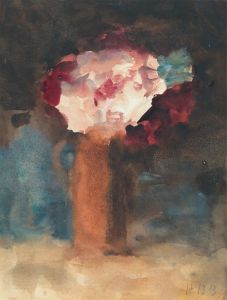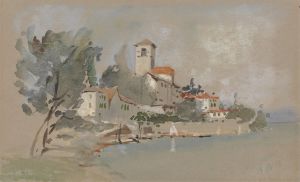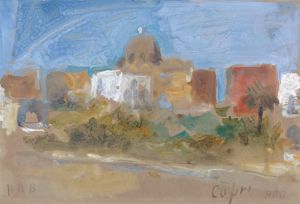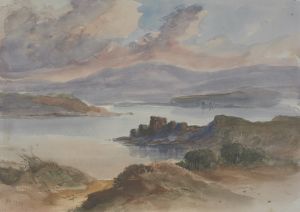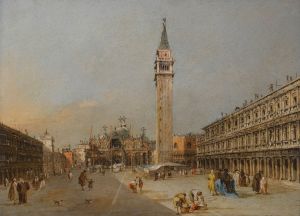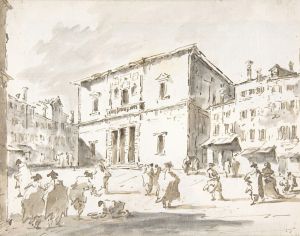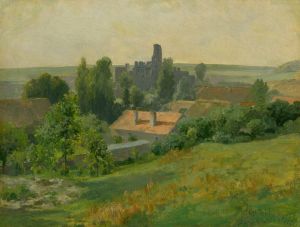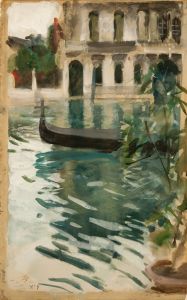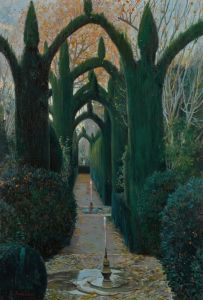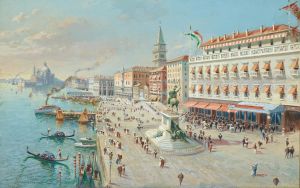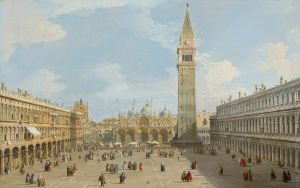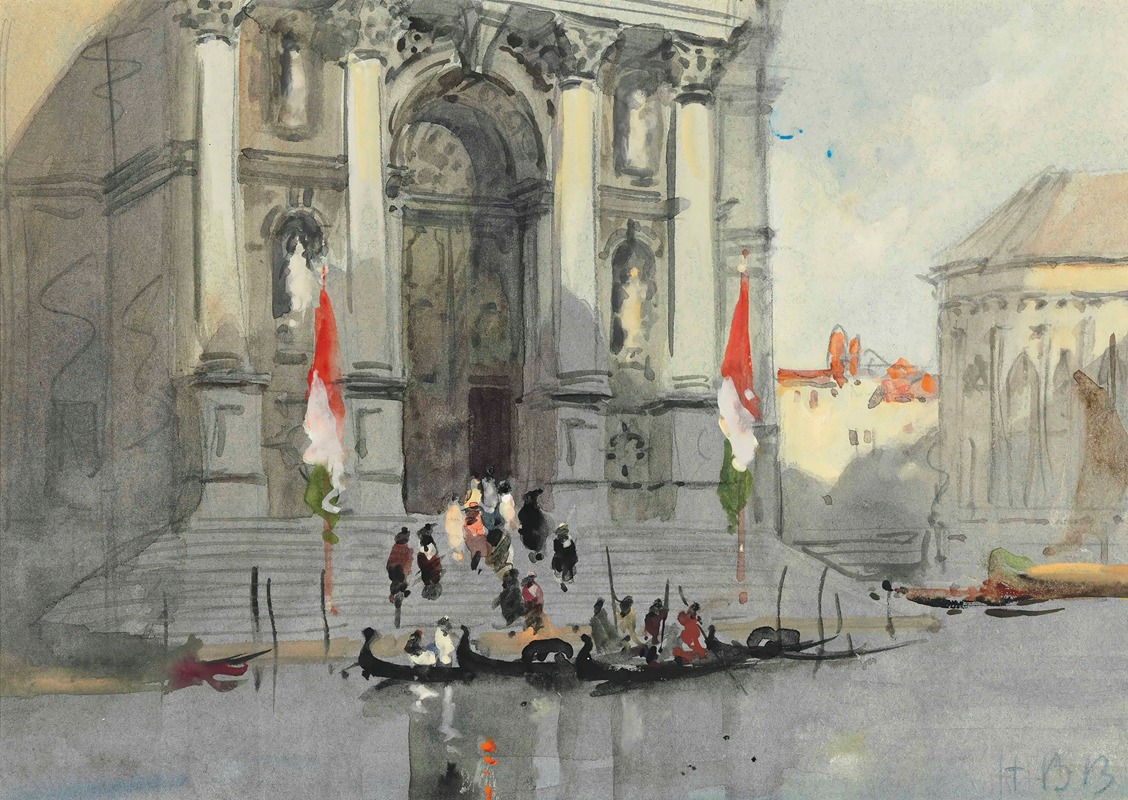
Santa Maria della Salute, Venice
A hand-painted replica of Hercules Brabazon Brabazon’s masterpiece Santa Maria della Salute, Venice, meticulously crafted by professional artists to capture the true essence of the original. Each piece is created with museum-quality canvas and rare mineral pigments, carefully painted by experienced artists with delicate brushstrokes and rich, layered colors to perfectly recreate the texture of the original artwork. Unlike machine-printed reproductions, this hand-painted version brings the painting to life, infused with the artist’s emotions and skill in every stroke. Whether for personal collection or home decoration, it instantly elevates the artistic atmosphere of any space.
Hercules Brabazon Brabazon was a British artist known for his watercolors and sketches, often capturing the essence of his travels across Europe and beyond. One of his notable works is "Santa Maria della Salute, Venice," which depicts the iconic basilica located at the entrance to the Grand Canal in Venice, Italy.
Brabazon was born in 1821 and initially pursued a career in law, but his passion for art eventually led him to become a full-time artist. He was particularly drawn to the picturesque landscapes and architectural marvels of Europe, and Venice was a frequent subject in his work. The city, with its unique blend of water, light, and historical architecture, provided endless inspiration for artists of the time, and Brabazon was no exception.
"Santa Maria della Salute, Venice" captures the grandeur and beauty of the Basilica di Santa Maria della Salute, a masterpiece of Baroque architecture. The basilica was designed by Baldassare Longhena and completed in 1681. It stands as a symbol of gratitude to the Virgin Mary for delivering the city from a devastating plague in the 17th century. The church's prominent position at the junction of the Grand Canal and the Bacino di San Marco makes it one of the most photographed and painted landmarks in Venice.
Brabazon's depiction of Santa Maria della Salute is characterized by his distinctive style, which combines a loose, fluid technique with a keen eye for detail. His use of watercolor allowed him to capture the play of light and shadow on the basilica's intricate façade and domes, as well as the reflections in the surrounding water. This approach not only highlights the architectural features of the church but also conveys the atmospheric quality of Venice itself.
Throughout his career, Brabazon was celebrated for his ability to convey the mood and atmosphere of a place rather than focusing solely on precise architectural details. His work often emphasized the interplay of light and color, creating a sense of immediacy and spontaneity. This technique is evident in "Santa Maria della Salute, Venice," where the soft washes of color and delicate brushwork evoke the serene beauty of the scene.
Brabazon's contributions to the art world were recognized during his lifetime, and he exhibited his works at prestigious venues such as the Royal Academy and the New Watercolour Society. Despite his success, he remained somewhat of an independent figure, preferring to travel and paint according to his own interests rather than conforming to the expectations of the art establishment.
Today, Brabazon's works, including "Santa Maria della Salute, Venice," are appreciated for their artistic merit and historical significance. They offer a glimpse into the 19th-century European landscape and the enduring allure of Venice as a source of artistic inspiration. His paintings continue to be studied and admired for their unique blend of technical skill and emotional resonance, ensuring Brabazon's place in the history of British art.







